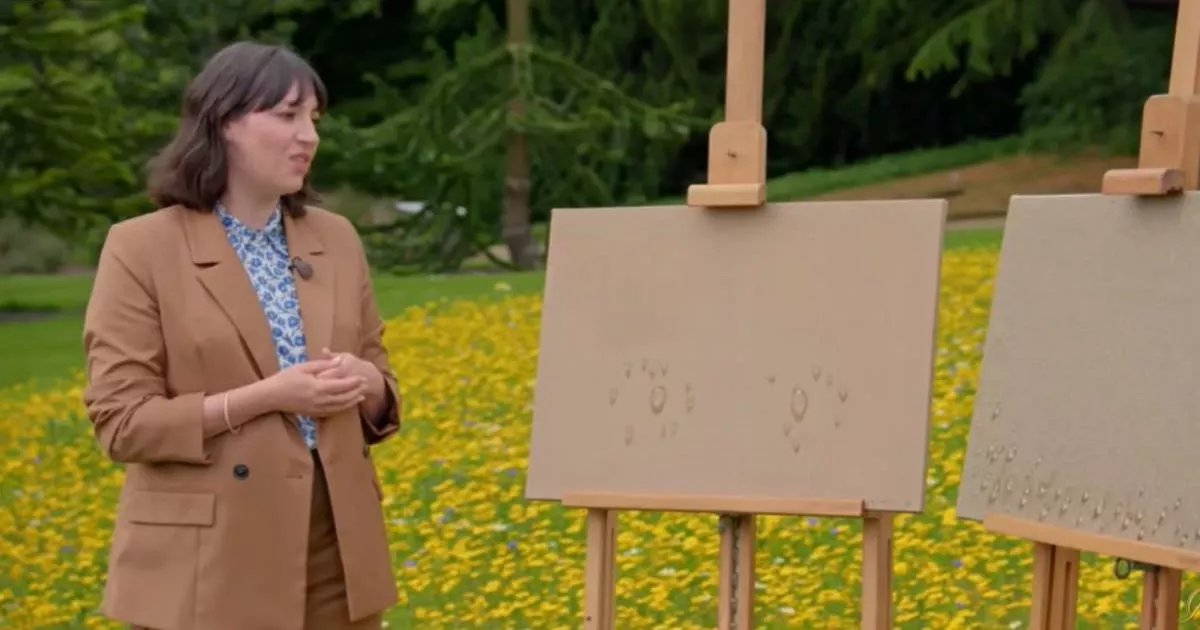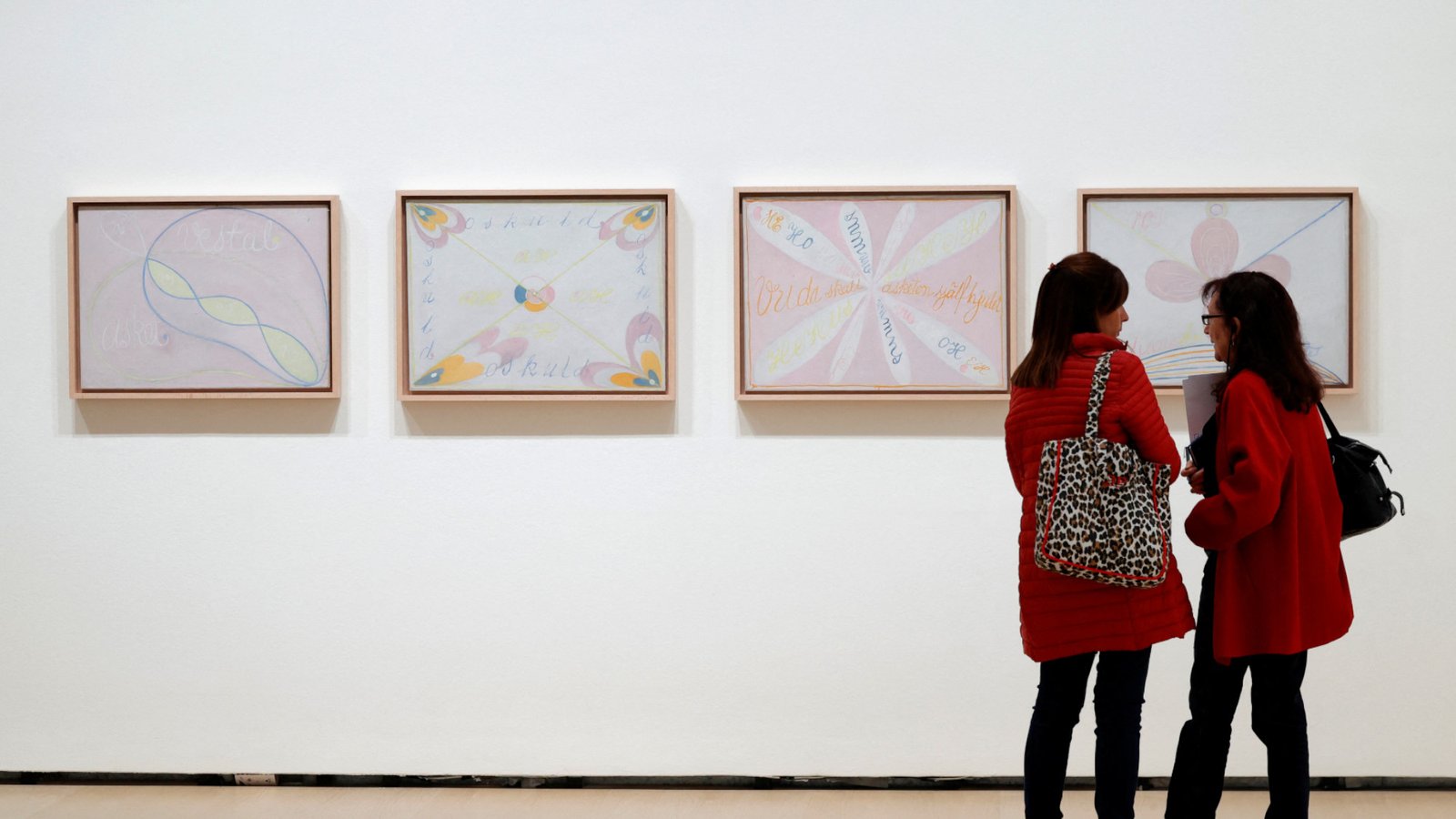 Rob Strati, The Fall and Forest, 2023.
Rob Strati, The Fall and Forest, 2023.
By ANTHONY HADEN-GUEST, May 2023
It was in the Fall of 2020 that Jocelyn, wife of the artist, Rob Strati, dropped a plate in the kitchen. It was unmendably shattered but it had been a present from her late mother so they didn’t toss the pieces out, laying them out instead on the counter. “It was a blue willow pattern plate,” says Strati. Willow pattern plates had been one of the most ubiquitous elements in the faux chinoiserie that was hugely popular in the UK from the late 18th century on, so much so that stories based on the image on the plate, the solitary boatman, the pagoda-like structure, the dominant willow tree and, mostly, the three figures seen crossing a bridge, have been published, one in a children’s book, and these are referenced in an 1849 Brit magazine, The Family Friend.
Strati, who is in his early fifties, and has been showing in galleries since 1992, makes work which is graphic, adventurous in its choice of materials and unafraid of complex minutia. For instance, the title of his 2012 show at Robert Henry Contemporary in Brooklyn, Diagramming Schematic Intangibility, and Hover, a piece in that show, which is a helium-filled latex balloon. And soon enough he began focusing on the broken plate. “I had never really looked at it properly before,” Strati says. “I would look at it a lot when I walked through the kitchen with groceries. Three months go by and then I notice the little bridge. I don’t know why I noticed it and the tree. Where are the guys going? It made me wonder what the story would be beyond this. To see the beautiful building. I never saw it as a building, unless there were more buildings. It really made me think. So I had the idea and brought it back to the studio and left it upstairs for another two months. That was the first one. People say it was such a great idea. But it was just an accident.”
 Rob Strati, Fragmented in Blue, 2021.
Rob Strati, Fragmented in Blue, 2021.
It was very specifically the events of January 6 that got Rob Strati going. “It was insanity,” he says. “I was just understanding that. And thinking of fragmenting systems … traditional systems breaking apart … and the breaking down of our culture. Everything that’s going on, the craziness in politics, global dynamics. I was just drawing from the plate. It was a combination of being frustrated with what was going on in the world, the situation in the world, and trying to make something positive out of it”.
It was thus that Strati evolved the pen and ink drawings from the fragments of china and launched on the series he named Fragmented. He acquires his raw material from EBay and Etsy and in due course added a red plate to the blue. “The green plate is more of a European pattern,” he says “It has more of a pastoral style. Some women washing clothes and a man on a horse. There’s a cathedral scene with some animals and people off in the background.”
Strati has created some two dozen plates so far and is understandably getting attention from overseas, including China. “I just sold a piece to someone in Hong Kong,” he says. “And somebody posted something in China. I don’t know what, some kind of program. They made an episode of it. It might just have been YouTube”.
 Fragmented in Green with Cathedral and Flowers, 2023
Fragmented in Green with Cathedral and Flowers, 2023
Fragmented also relates to another element in the culture though, and a sometimes disturbing one: Destruction. This can be avant-garde. As when Ai Weiwei dropped a Han dynasty vase or Duchamp’s reaction to the cracking of Large Glass in transit after an exhibition at the Brooklyn Museum in 1926-27, that this had completed the piece. “Do you think I would have made it out of glass if I hadn’t known it was going to break?” he said. It can also be brilliantly opportunist, as with Banksy’s auto-shredding of Girl with Balloon on October 5, 2018, immediately after it had been auctioned at Sotheby’s for £1,042,000. But it will usually be ugly, indeed ominous, as when climate protesters throw substances at paintings by, for instance, Van Gogh. Does Strati find this brouhaha relevant to his own work?
“Definitely,” he said. “Our society is fragmenting. It has fragmented, it is broken. What do you do with something that’s broken? Do you try to repair it? Do you just try to glue it back together? There are times when you can’t do that. So then you have to build something from it. And that’s a hard process to go through. But it’s also a beautiful process. And that’s where artists thrive.” WM






